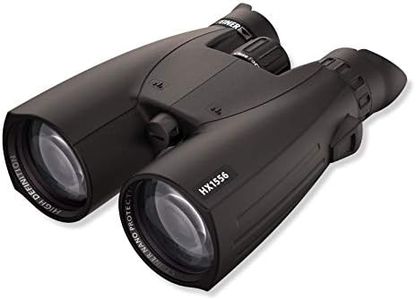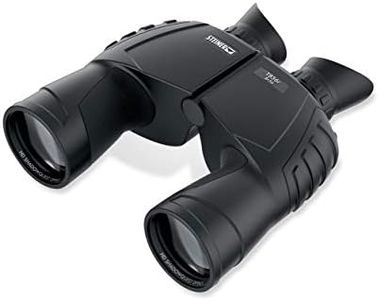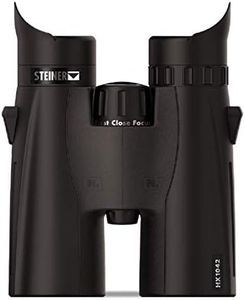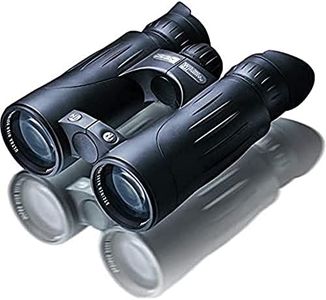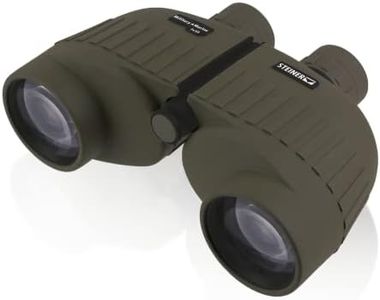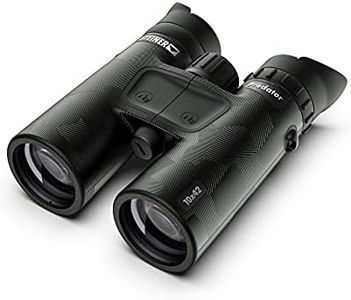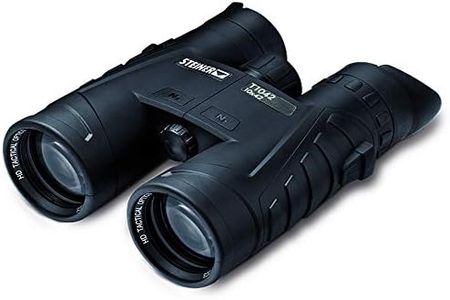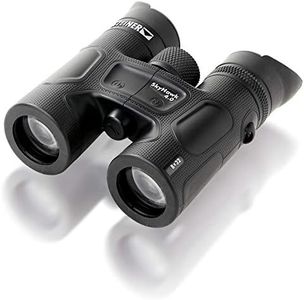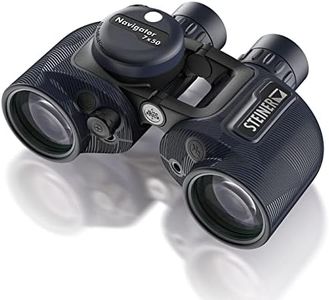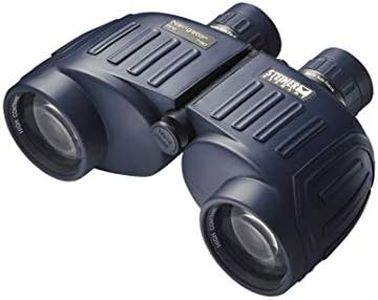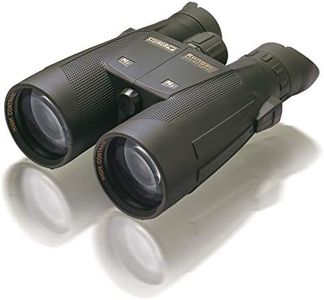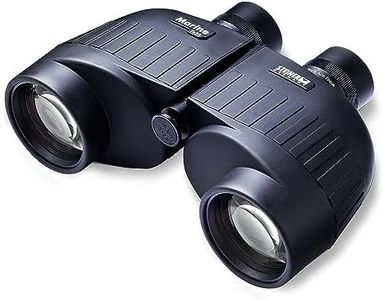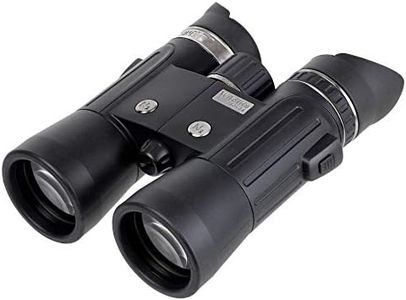We Use CookiesWe use cookies to enhance the security, performance,
functionality and for analytical and promotional activities. By continuing to browse this site you
are agreeing to our privacy policy
10 Best Steiner Binoculars
From leading brands and best sellers available on the web.Buying Guide for the Best Steiner Binoculars
Choosing the right binoculars can greatly enhance your experience, whether you're birdwatching, hiking, boating, or attending sports events. Before buying, think about what you'll primarily use the binoculars for, as this affects which features are most important. Pay attention to the optical specifications and comfort features to make sure your binoculars will perform well in the situations you plan to use them. Always consider how the design and features match your activities and personal preferences, from the size and weight to the quality of the lenses.Magnification and Objective Lens DiameterThis specification is usually written as two numbers, like 8x42. The first number refers to magnification (how many times closer objects appear), and the second is the diameter of the objective lens in millimeters. Higher magnification brings objects closer but can make the view shakier and reduces the field of view. Larger objective lenses let in more light for brighter images, especially in low light, but also make binoculars heavier. If you want a wider, steadier view (like for sports or nature), lower magnification (7x or 8x) is often sufficient. For detailed viewing over longer distances (like hunting or bird identification), higher magnification (10x or more) may be helpful, but stability becomes more important. Choose the combination that matches your main use and comfort with holding weight and steadiness.
Field of ViewField of view is how wide an area you can see through the binoculars, usually measured in meters or feet at a given distance. A wider field of view makes it easier to locate and track moving objects, which is ideal for activities like birdwatching or sports events. Narrower fields of view allow for more focused detail and are better for stationary targets. If you’re often spotting or tracking, a wider field of view is more helpful, while for observing specific subjects at distance, a narrower but sharper field may be preferable.
Prism TypeBinoculars use prisms inside for image correction, usually either roof prism or porro prism. Roof prisms make binoculars more compact and straight in shape, while porro prisms typically offer a wider view and sometimes better depth perception but are bulkier. If you value portability and sleek design, roof prism binoculars may suit you, but if you prefer a traditional shape and can handle more size, porro prism designs can be a good fit.
Lens CoatingsLens coatings describe special chemical layers applied to glass surfaces to reduce light reflection, improve brightness, and protect the optics. Fully multi-coated lenses provide the best brightness and clarity, especially in tough lighting, while single coatings offer basic improvement. If you often use binoculars at dawn, dusk, or in shaded areas, look for fully multi-coated lenses for the brightest, sharpest image. Basic coatings can suffice for casual, daytime use.
Waterproofing and Fog ResistanceMany binoculars are sealed with O-rings and filled with gases like nitrogen to prevent water entry and fog buildup inside the lenses. This is especially important for outdoor activities in wet, humid or quickly changing environments. If you’ll use your binoculars outdoors, especially near water or in unpredictable weather, waterproof and fog-resistant models are recommended. For indoor or occasional dry use, this feature may be less critical.
Weight and SizeThe overall weight and size of binoculars affect how long and comfortably you can use them. Heavier, larger binoculars often have bigger lenses and brighter views, but can be tiring to hold for long periods. More compact models are easier to carry and handle but may let in less light. Think about how you’ll carry and use the binoculars—if you’re hiking or traveling, lightweight and compact designs are more convenient, while stationary use (like from a hide or deck) can accommodate heavier binoculars.
Eye ReliefEye relief refers to the distance between your eyes and the eyepiece at which you can see the full image. This is particularly important for glasses wearers. A longer eye relief means you don’t have to press your eyes directly to the lens to see properly, making binoculars more comfortable, especially over extended viewing. If you wear glasses, look for eye relief of 15mm or more to ensure you see the full field of view comfortably.
